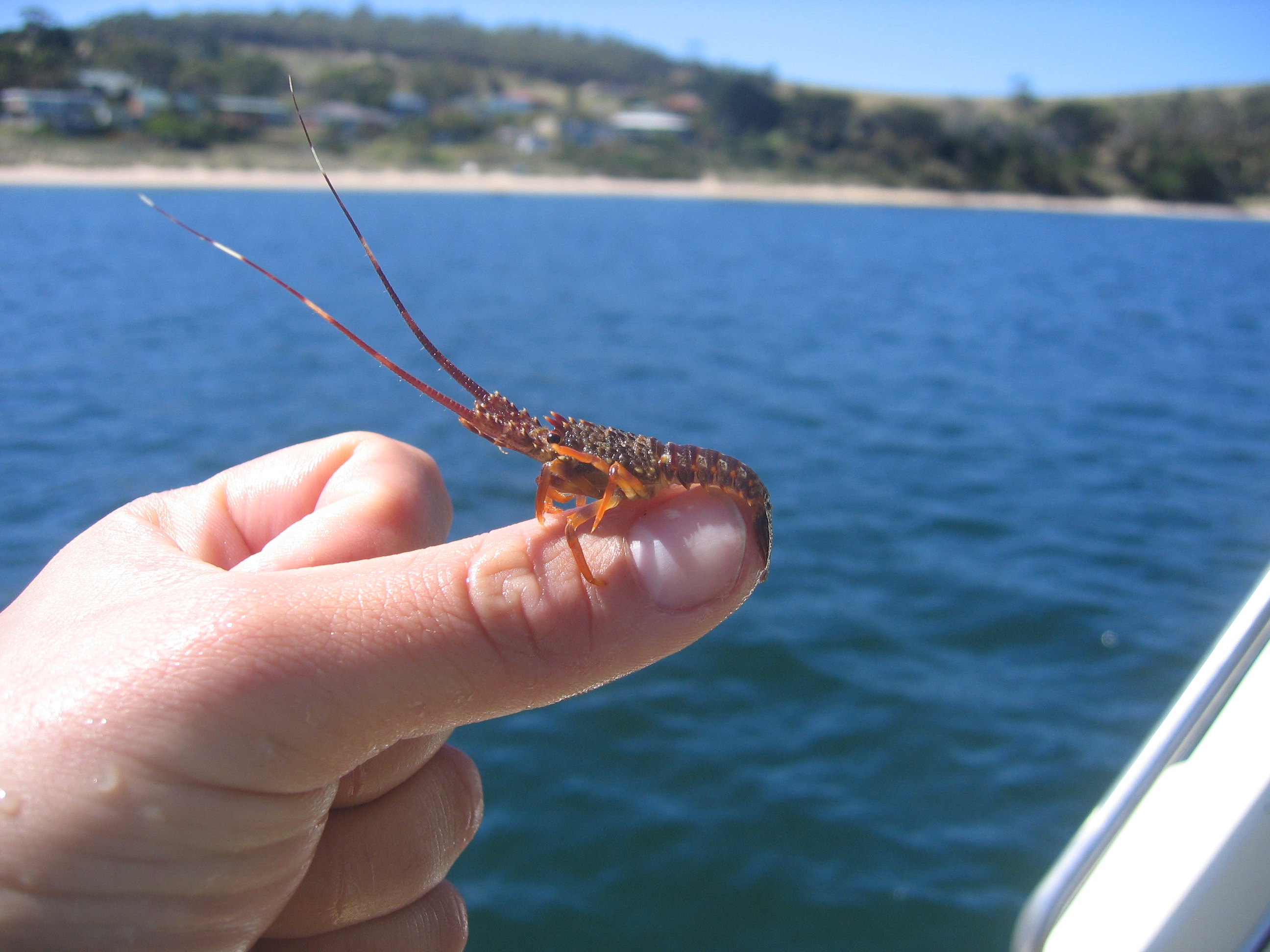Puerulus Monitoring

Juvenile southern rock lobster are benthic dwellers on rocky reefs that have developed pigmented shells and look identical to adults.
Southern rock lobster has the longest pelagic larval stage of any rock lobster species. After spawning, lobster eggs/larvae spend 1 to 2 years in the open ocean. Surviving larvae then metamorphose into Puerulus at which stage they can actively swim and can settle if they come within close range of suitable shallow habitat. The long larvae duration and natural variability of ocean currents result in high variability in the number of larvae settling in a given location each year.
Puerulus collectors have been deployed since 1990 at several locations in Tasmania. These collectors mimic attractive settlement habitat for puerulus and are regularly visited by IMAS field teams to count the number of puerulus, thereby providing a relative index of the number of puerulus settling through time. In Tasmania the link between puerulus settlement and subsequent growth to juvenile lobsters is weak due to a range of factors that effect survival rates and are not well understood. However, reasonable levels of settlement are a pre-requisite for subsequent recruitment to the stock.
Locations of puerulus collectors that are monitored by IMAS researchers along Eastern Tasmania.
Regular monitoring of the Puerulus collectors over the last 25 years has provided a good understanding of the seasonal cycle of Puerulus settlement. Peaks occur in December/January and August/September with the strength of these peaks varying by region.

Photo of a puerulus collector. Photo courtesy of: Dr Iván Hinojosa
The inter-annual trend in puerulus settlement is of primary interest for understanding the health of the stock and foreseeing future low recruitment to the adult population. A negative binomial regression is used to calculate the annual strength of recruitment across all months. This process can be applied to individual sites and across all sites to produce a annual index quantifying the strength of recruitment.
The annual index reveals that puerulus settlement was at record low levels in 2003-2005 and remained below the historic average until 2010. This has been linked to the subsequent low stock recruitment in the late 2000s. Settlement returned to the long term average between 2010 and 2014, and after low levels in 2015, was at record high levels in 2016 and 2017. This program has been indefinitely suspended following an assessment of the cost-effectiveness of the IMAS data collection program.



